Other People's Kitchens Q&A with Sarah Copeland
Discover a more peaceful life in Sarah's stone farmhouse kitchen in Hungary.
This week,
invited us into her kitchen in Hungary.Q - Hello Sarah. Can you please tell us a little about yourself, where you live and your substack publication?
A -Hello, I’m a four-time cookbook author, parent to two school-age kiddos, and nature enthusiast living in the Hudson Valley, New York. My substack is called 'Edible Living', a name I’ve been using for nearly two decades to define how I think about a life with growing, cooking, and sharing food as a central theme of how we connect with ourselves, our families, and our larger world.
I write a lot about Central Europe, Hungarian foodways, and our life straddling the US and Hungary, where my husband is from. I also dip into dinner strategy, nutrition (light), and world travel since travel is the spark that keeps me growing and learning in life and my work.
My books are The Newlywed Cookbook, Feast, Every Day is Saturday, and Instant Family Meals. You’ll also find my writing and recipes in the New York Times, Food & Wine Magazine, and other publications.
Q - Can you please describe the layout of your kitchen in Hungary, how much of a role does it play with your family, and when writing for your ‘Edible Living Newsletter'?
A - For most of the year, I’m writing from my kitchen in the lower Catskills, about 90 miles outside New York City. But for one glorious summer month each year (and sometimes longer), I write and create from our kitchen in Hungary, in an old stone farmhouse we’ve been restoring for over 16 years with my husband, András, in the valley of the Bakony Mountains.
Our kitchen in Hungary is my favorite. It’s wildly simple: a medium-sized rectangular room with a double sink, a small stove, and a tiny back pantry that also houses the fridge.
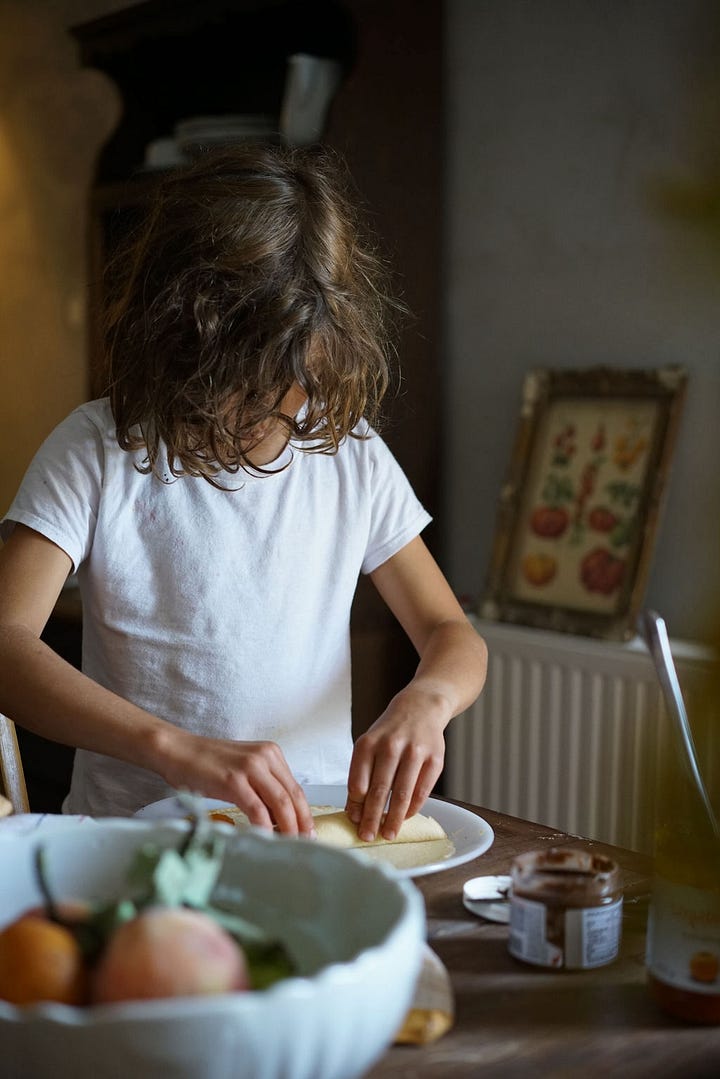

Because there are no electronics in our kitchen here (outside of the toaster and tea kettle –which live in the pantry but come out on heavy breakfast days), there’s a serene quality to our kitchen I could only dream of achieving back in the US. It forces me to cook more simply and purely, mostly foods found and grown in my mother-in-law’s ample garden (she lives next door), collected from our fruit trees, or foraged from the woods and fields we travel on hikes and horseback rides.
Q - What are your most used kitchen gadgets and kitchen gear that you cannot live without?
A - My large wooden pastry board, which I set over our table as a workspace whenever I bake here (which is often!!). It’s precious to me because it’s sheer magic that it came to be mine. Shortly after my husband proposed to me in the woods behind our home, his nagyama (grandmother), taught me to make strudel from scratch. It was a glorious day and memory with her, especially since she passed away during our wedding visit about a year later. It was the only time I ever made strudel with her.
Eventually, her home and all her belongings became my Mother-in-law’s, but somehow, both András’ mother and sister decided the pastry board should be mine, probably because I would be the most likely to use it. And I do–more than anything in the kitchen.
Second place goes to the electric tea kettle! We are a tea family; waiting for water to boil on the stove is one thing I don’t have patience for, even in our old-fashioned life here.
Q - Is there anything about your kitchen that you would like to change or improve on?
A - Yes and no. It’s an annual conundrum for me to modernize or not to modernize this kitchen (I wrote more about that, here). There is very limited counter space here. András built the pine frame around the 1950s sink about 16 years ago, right before we got married, to accommodate a house full of guests. It has a little flap that folds up and often serves as my counter space. The table is where I prep most food and sometimes serve it.
We’ve put a lot of time into modernizing the rest of the house–with plumbing, modern heat, and even AC. Meanwhile, we’ve investigated fancy French stoves, built-in counters, etc., and thought about how they could change and possibly improve this space. But modernizing the kitchen would also change how we live here. Most of life moves too fast for my taste. I’m not ready for that pace during our limited time here.
Q - What tips can you give us that will help keep our kitchens neat and tidy and easy to manage?
A - I am a big believer in less is more. In my kitchen in the US, I have a lot more space and ample storage space, but also about 10 times more appliances, gadgets, and deep apocalypse-level pantry storage (it’s my husband’s thing–as if a grocery store wasn’t 1.5 miles away!!).
Yes, these tools help me create and answer the call of challenging assignments from editors at the New York Times, Food & Wine, and others. But I also spend too much time shuffling and cleaning Vitamixes, instant pot liners, and various pots and pans. It can be overwhelming.
Here in Hungary, I have two large vintage enamel pots and two small ones, a tiny fridge, just two pantry shelves, and one stunning set of heirloom dishes. It’s very fluid and simple living. It would indeed be more challenging if we lived here year-round, but we did live here for 6 months during the school year back in 2022, and I found that dinner was easier and more peaceful. I shopped for only what I needed for a few days and spent far less time shuffling groceries or appliances around.
This is the opposite of a smart kitchen (no smart appliances, no Alexa, no conveniences), and yet it saves me time and offers me way more peace, so maybe there is something in it.
Q - You've included travelogues in your newsletter. Could you tell us more about them and what inspired you to write them?
A - I always wanted to be a writer, but as I started traveling small bits with my family as a kid, especially as a college student studying abroad, travel became the focus of my curiosity: How do other people live? How do they eat? What is their apartment or family life like? What are people’s habits in Lisbon, Paris, or Puerto Vallarta? This bled into my writing more and more, and Substack has given me a place to explore that.
I’ve been blessed to experience many countries “like a local,” I went to Bali and Jakarta with my dear college friend whose parents lived there. I lived in Ireland as a student, in Paris in my 20s, and later in the South of France as a private chef. Most recently, I have experienced Hungary, Vienna, and Croatia, the countries of my husband’s youth, through his eyes. I have shopped at the local markets year after year and have been a repeat customer at the same coffee shops. This changes your experience of a country.
Once you travel like a local, you’re afforded a more peaceful, intimate experience of a place. I want other people to have that kind of window rather than being thrust into the tourist mayhem of, say, Venice in August or Rome in July. Of course, you will have a lovely time either way, but it won’t be the same as visiting Croatia in August, for example, or Trieste on the cusp of fall. I want to help others experience these same windows into other worlds. It helps us live more freely, understand others better, and feel more connected with our neighbors around the world.
My hope is for everyone who stops here to have the best possible experience when they travel. If I can help even one reader find an affordable, charming hotel in Budapest within walking distance to the best sites, find the best beaches in southern Portugal, or eat at the best low-key restaurants in NYC without blowing their budget, that brings me a lot of joy.
Q - You spent two summers as a private chef in St Tropez.
A - Yes! I was so lucky to land an opportunity to cook for a very lovely family in their villa in St. Tropez, directly on the Mediterranean Sea, for two summers in a row. They were warm and generous and gave me free reign over my menu and fairly unlimited budgets as long as I came up with lunch and dinner for them (and sometimes up to 20 guests!) each day. There was only two rules: never serve day old bread (which meant a market or bakery run every morning), and cook chicken (for the Madame) at least once a week.
I was only one year out of culinary school, and though I’d worked in two elite three-star restaurants in New York, this was my first time being in charge of a kitchen–a French kitchen on the sea with a garden!! It was bliss. I worked so hard those two summers. I considered it both a stroke of luck and an education: I cured duck pastrami, cooked a whole side of cote du boeuf (flown in from a Paris butcher) on live fire, prepared whole Loup de Mer and Scallops in their shell that I’d bought from the fishmonger that morning. I made fine pastries and Tart Tropézienne, tomato náge (brothy soups), seared monkfish, and served salad and enormous French cheese plates every evening after the meal.
I have never cooked so much or so well again, but I loved every minute. And imagine I got paid!! Later, the other private chefs in St. Tropez educated me that I should have been paid much more, but I was so happy to be exploring, creating, and learning. Every synapse in my brain was firing, and I could still jump into the sea to cool off every night. It never felt like work at all.
Here’s a story I wrote about that time, How to Cook Like you Live in St. Tropez.
Q - How would you describe the regional cuisine where you live in Hungary, and how does this compare to the foods available in New York, where you also have a home? Are there fresh food markets, or farmers markets available?
A - Hungarians are very seasonally oriented. Nearly everyone has a garden or small farm (certainly in our village, everyone grows and raises food). Still, fruit trees are the norm for landscaping private homes and public yards, even in more suburban areas or urban areas. For example, you’ll find plum trees or elderberries outside of nearly every civic building and apple trees in the schoolyards, making it easy to forage and eat off the land, at least for part of your week.
There are also roadside farm stands and farmer’s markets in every village, usually a few great local bakeries, even in smaller towns.
Food is simple here: of course, there are the hearty cooked dishes and stews people think of, but the food is also very vegetable-forward, with stewed vegetables and soups like you might find in Italy or France or even my grandmother’s kitchen in Missouri. The people are smart, frugal, and resourceful, and the food reflects that.
And let’s not forget the pastry! Hungarian pastry and coffee house culture runs deep, back to the Ottoman invasion and the Austro-Hugarian empire. You can count on the villagers to be great bakers (most of Andras’ friends, male and female alike, regularly bake Bukta–stuffed yeasted rolls, or beigli, strudel, or fresh bread). In the towns and cities, an elevated coffee drink and sweets around 3 PM is the norm; whether you’re a student craftsman or work in finance or law, taking a break to connect and nourish is central to the culture.
Q - How many cookbooks do you have, do you have any favorites? You have also written 4 cookbooks and about to write a fifth. Can you tell us about these and give any tips for other food writers looking to write a cookbook?
A - Oh boy, in my studio from where I am writing to you now, I have at least 250 cookbooks, mostly displayed by color (binding), because I have a very categorical mind. Then, within the red bindings, for example, I can easily find books from all over the world–for example, Leon (French cooking), Salt, Sugar, Smoke (by Diana Henry) and The Woks of Life (Chinese cooking).
All my German, Austrian, Hungarian, and Eastern European cookbooks are currently in one section folded open all over my floor because this research is central to my work. Many of these are my current favorites, but I am always enamored with new work. I love to support fellow cookbook authors by sharing about their (Important!!) books. Every cookbook author has a slice of culture and history to share. They are vital to understanding the world we live in and the people who make it up.
As for me, yes, I’ve written four cookbooks (all linked here)! They are The Newlywed Cookbook, Feast, Every Day is Saturday, and Instant Family Meals. All are very different topically (a book for newlyweds, a Hungarian book, a very weekend centric-cookbook with lots of easy recipes, and a hard-hitting recipe book for Instant Pot cooking with substantial family meals), all hailing from different eras of my own life.
To write a cookbook today, you must attach your work to a story. What is unique about you and your family, and your story, that hasn’t already been told? The best cookbooks are not just a collection of good recipes. We can get that online, certainly on substack and blogs. But what makes a person need to have your book in their hands? Take it to bed with them to read? Display it on their coffee table, gift it to friends? That’s the eternal publishing question.
Q - Do you have a favorite recipe that you would like to share with us?
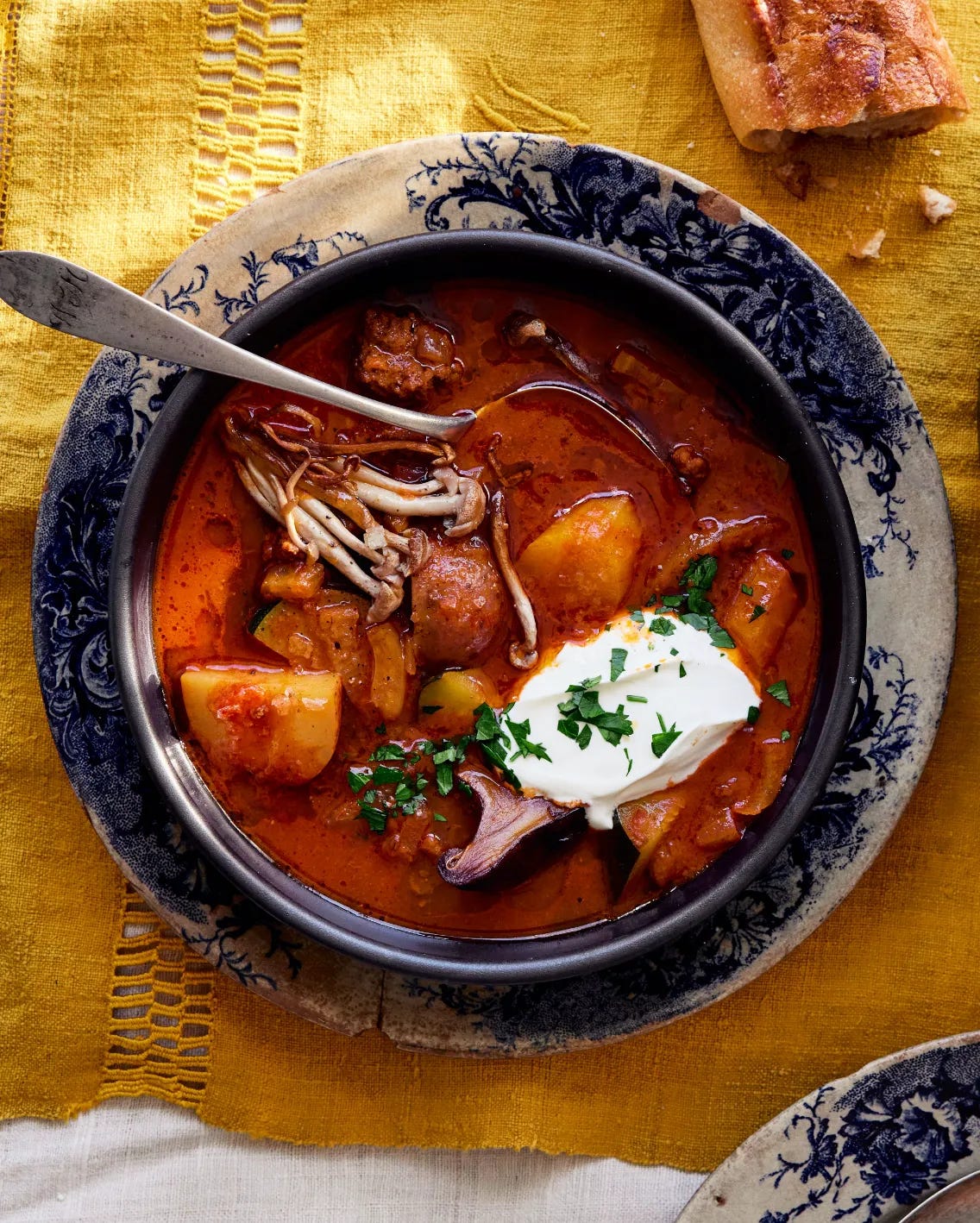
Yes! For this season (deep winter and through the late spring), I love my Brothy Hungarian Gulyás. It takes major liberties with tradition, but it’s so nourishing, delicious, and beautiful!
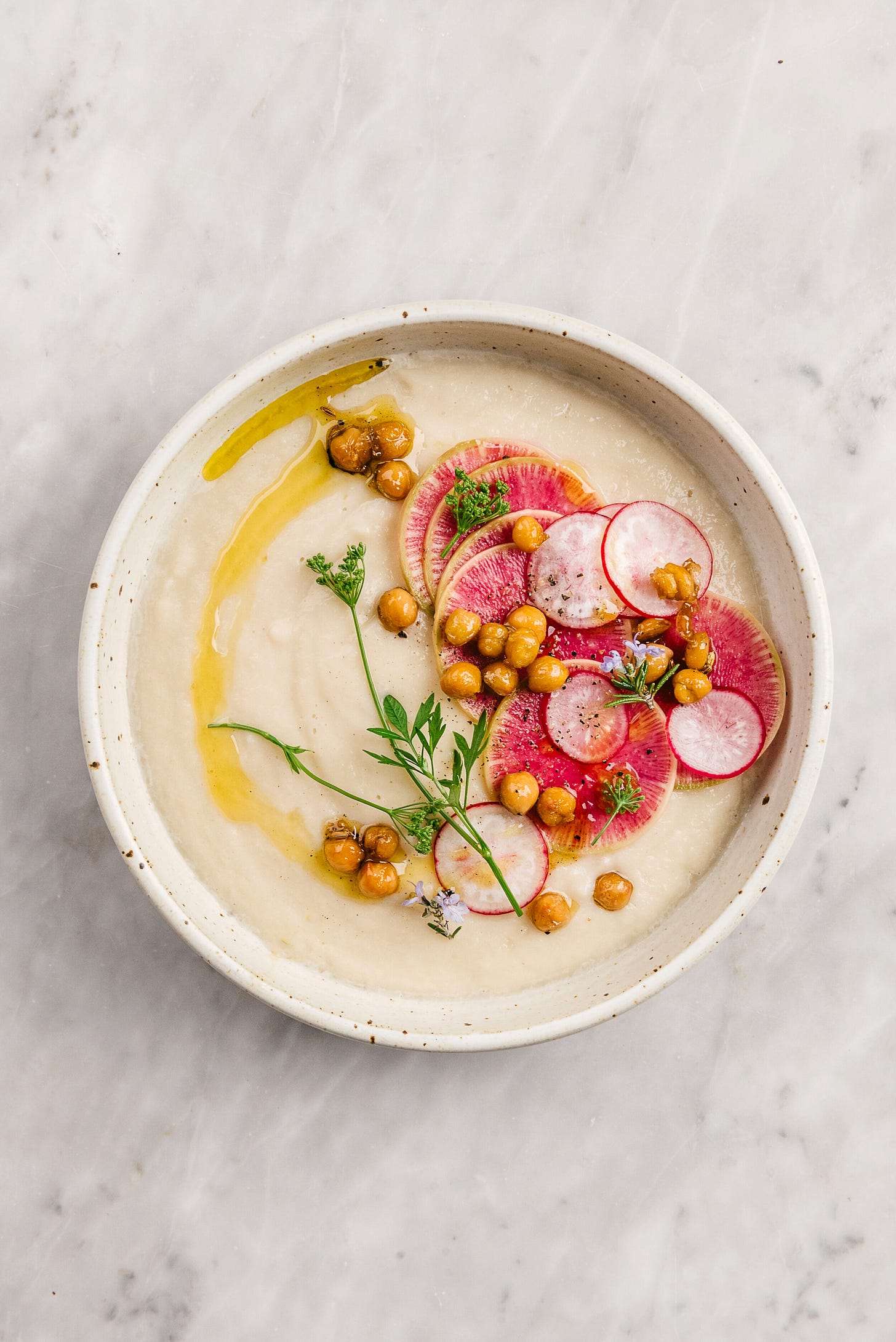
This Creamy Cauliflower Soup with Crispy Spiced Chickpeas and Radishes we make on repeat for months on end. It’s easy to riff on and is so comforting and yet visually delightful.
Finally, all ten recipes in my Love the Foods that Love You Back post are our classic, go-to foods that make me feel amazing. They are a thrill to eat or to serve.
Q - Have you had any kitchen disasters that you can share with us?
A - Oh many! My Achilles heel is that I often will go a couple of days without cooking (where I’m only preparing food, toast, salads, lovely composed plates of fresh or raw foods) and then really get the itch to prepare a lot of hot, nourishing meals at once – like batch cooking.
Often, this works out beautifully, where something is bubbling on the stove (soup or sauce), a quick bread in the oven, etc, while I’m whizzing together dressings and dips in the Vitamix or food processor. Occasionally, though, I take it too far; I want to use up every vegetable in the drawer and every scrap of old bread, so I decide to make croutons while all this is already going, for example, and that’s just one too many things. My croutons almost always end up black and burnt! Ditto steaming beets: the water runs dry while I’m also folding laundry, and then I’m cleaning that pot for two weeks. Ask my husband; it’s his favorite (ha!).
Thank you for having me! It was lovely to share and I so enjoy reading about other people’s kitchens and work here in your space.
Many thanks for sharing your kitchen in Hungary with us
Subscribe to Sarah’s Publication Edible Living
Read more from the series Q&A: Other People’s Kitchens.
Thank you. Lynn H.



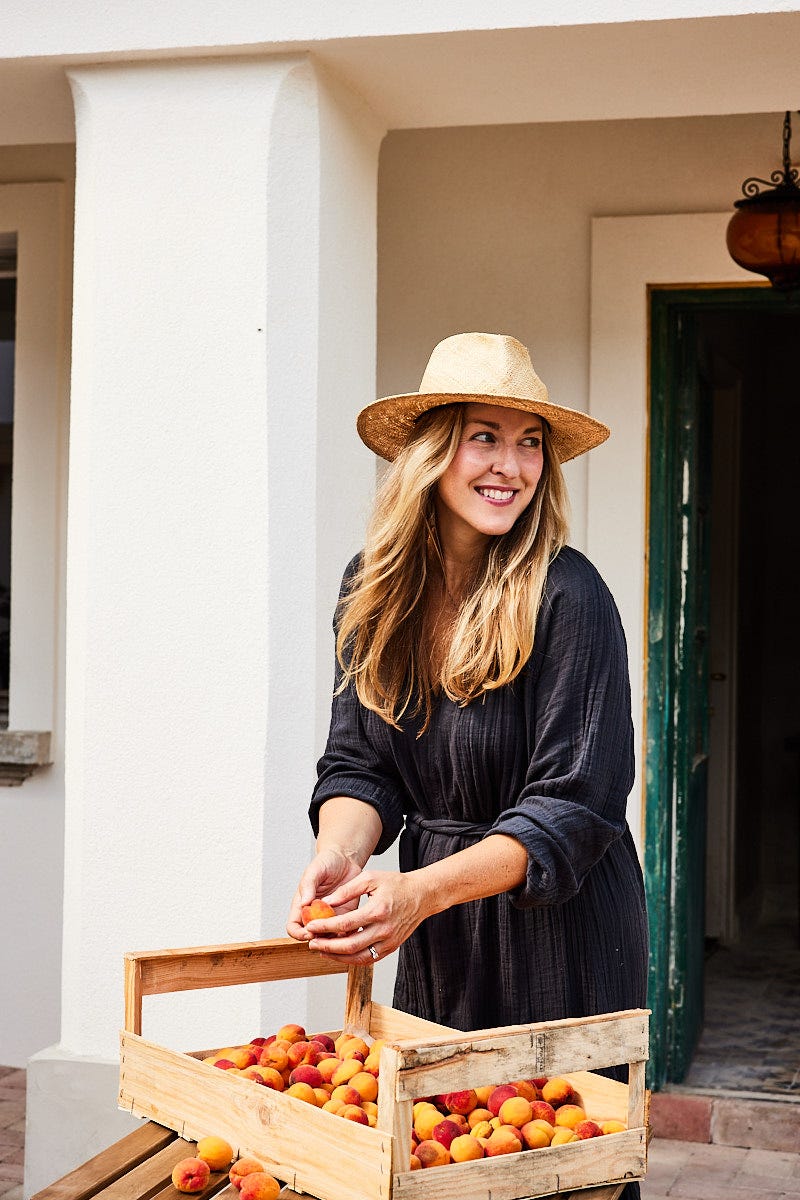
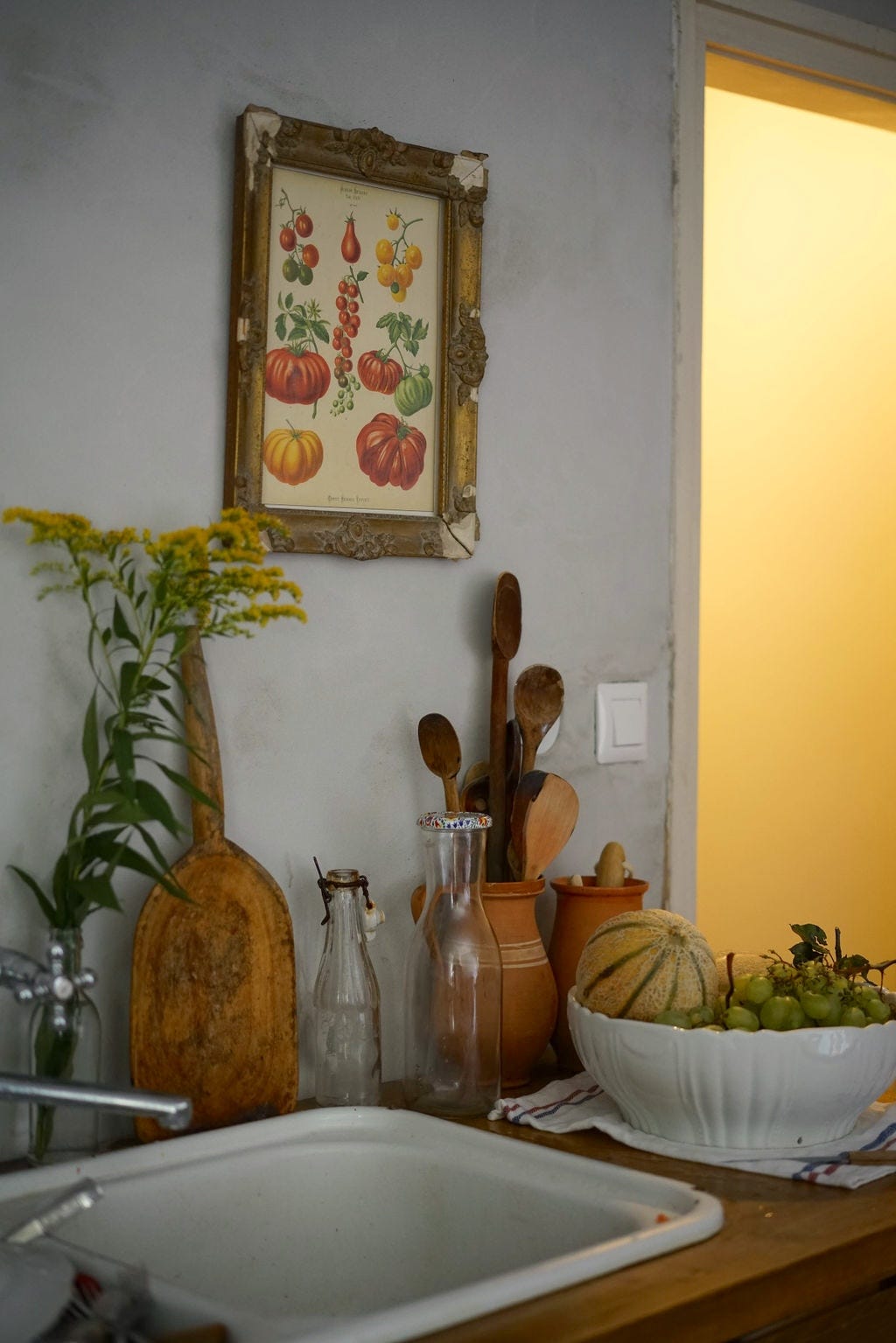
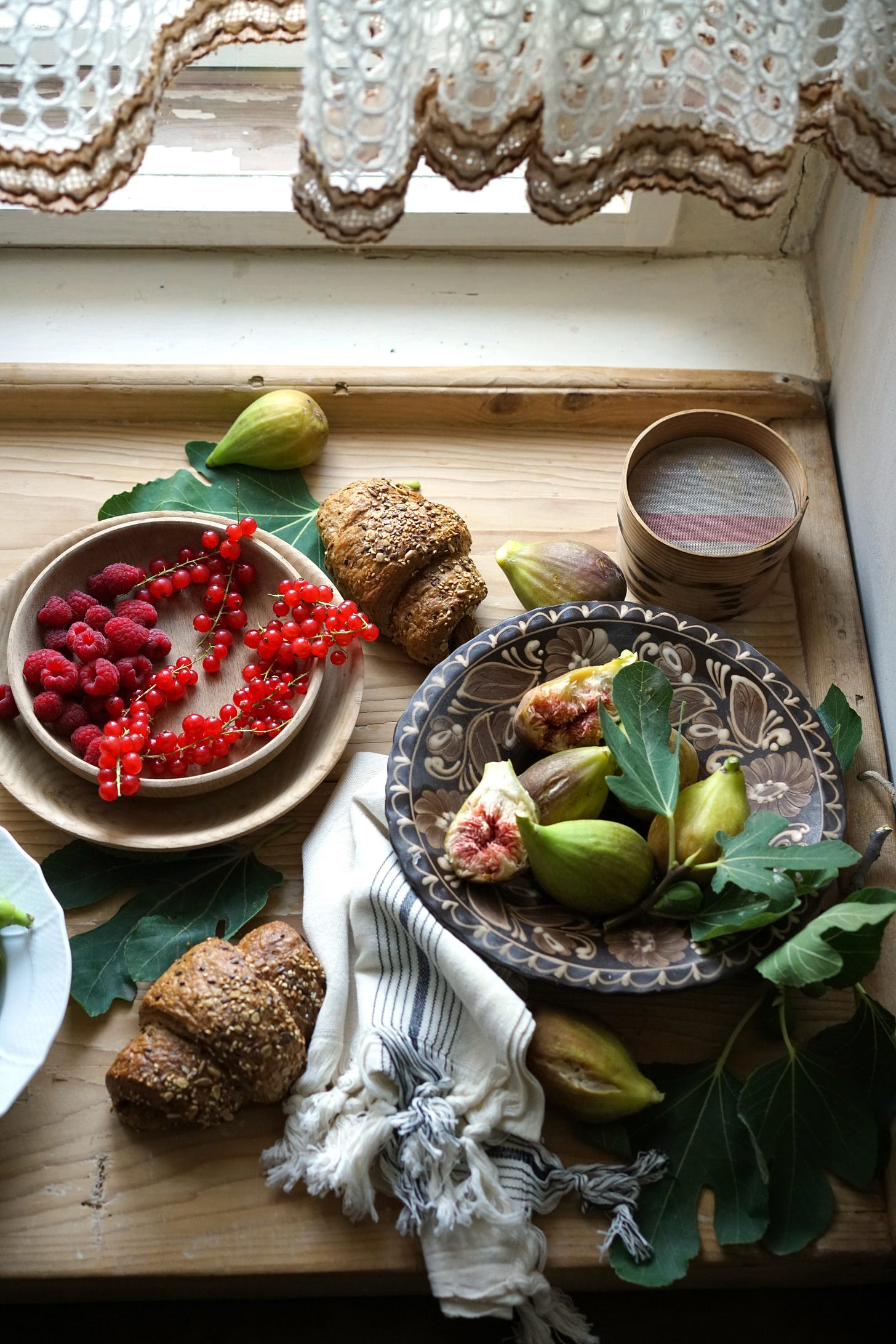
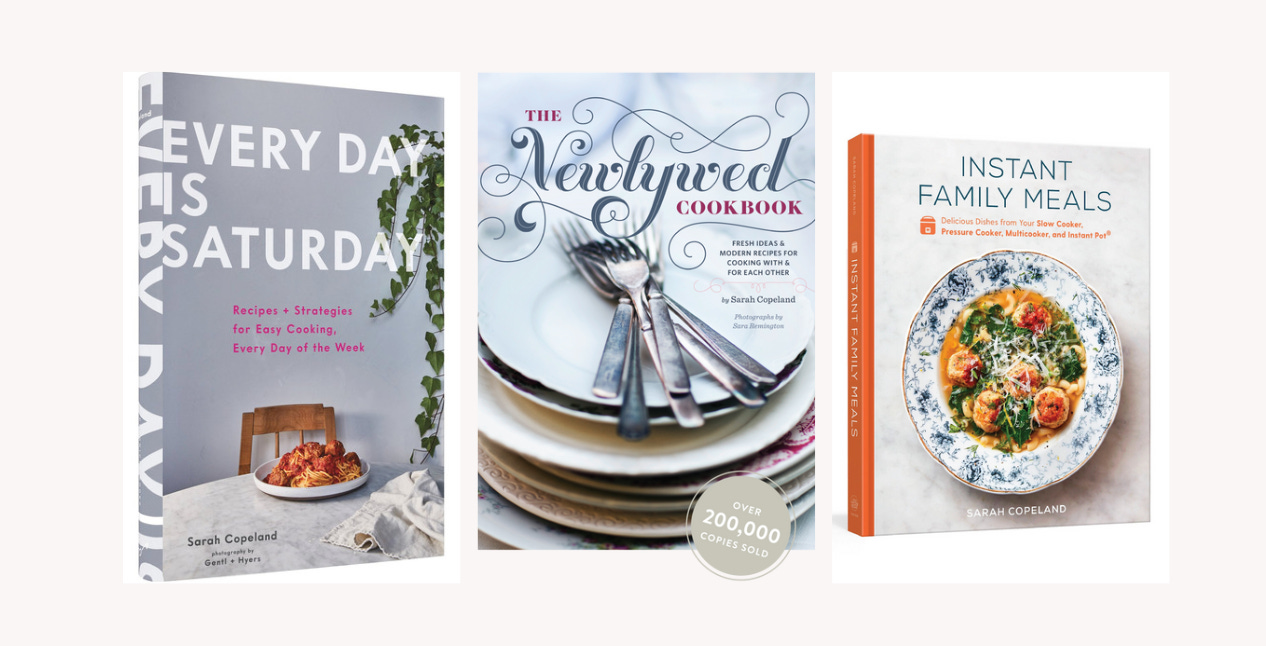


Such an honor to share a peek inside our home and life in Hungary. Thank you, Lynn, for hosting me this week!
Don't touch the Hungarian kitchen! 😊
Loved this post and all of your beautiful photos. Looking forward to trying your soup recipes.